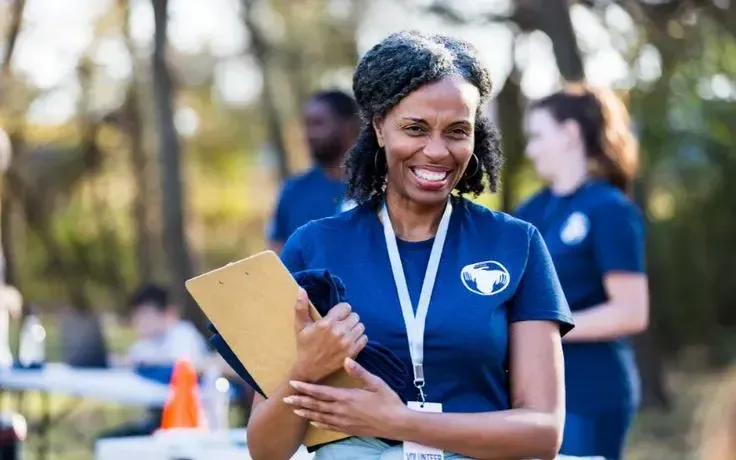AI revolutionizes creative industries: music, art, and screenwriting. Explores capabilities, challenges, and future implications of human-AI collaboration in artistic expression.
A new assistant has emerged in the realm of human creativity – someone who doesn’t sleep, doesn’t have writer’s block, can process a lot of information in seconds Artificial intelligence (AI) is making huge strides in creative industries, especially music composition , art making and film writing.
How do artists and writers adapt to this new landscape?
And most importantly, is AI a threat to human creativity or a powerful tool to make it better? As we face this creative revolution, let’s explore how AI is reshaping music, art and film writing, and what that means for creators and consumers. Playlists: Can AI make hits? The idea of computer composing may have seemed like science fiction a few decades ago, but it is now a reality that is reshaping the music industry. AI algorithms analyze large databases of existing songs, learning patterns and learning styles, and use this knowledge to create original songs. But how exactly does this work? AI composers often incorporate machine learning algorithms, specifically deep learning neural networks. Thousands of songs are plugged into these systems, from which they learn to recognize melodies, rhythms, timbres and arrangement patterns. Once trained, they can follow these learned patterns and create new songs.
Tools like AIVA (Artificial Intelligence Virtual Artist), Amper Music, and Google’s Magenta project are at the forefront of this shift. For example, Aiva has already composed music for feature films and commercials. In 2016, it became the first AI to be recognized as a composer by the Society of Music (SACEM), a testament to the quality of his music. But can AI really make hits? Even when AI can produce rhythmic and enjoyable music, the elements that make a song a "hit" often involve emotional resonances and cultural contexts that AI is still trying to fully understand but AI is yet to just trying to understand it better. What about imitating specific genres and composers? One of the most exciting capabilities of AI in music composition is its ability to play music in specific genres or mimic specific composer styles By nurturing compositions from specific genres or composers with AI, AI can learn to produce new music that sounds amazing. For example, researchers have created AI models that can compose music in the style of classical composers like Bach or Mozart. In the 2019 Volkswagen blind test, musicologists couldn’t consistently tell the difference between AI-generated and real Bach music. This ability is not limited to classical music. AI is designed to produce pop music, electronic dance music and even heavy metal. Each discipline presents its own challenges, requiring specific training issues, but the results can be surprisingly relevant.
But does this mean that AI will replace human composers? Most experts agree that while AI is a powerful tool, it lacks the emotional depth and freshness of spirit that human messengers bring to their work. Instead, many see AI as a collaborative tool, helping musicians overcome creative obstacles or explore new musical realms.
Creating Art: Can a Machine Be Creative?
The world of visual art is another creative area where AI is making waves. From creating original works of art to turning cluttered images into advanced work, AI is pushing the boundaries of what we consider art. Generative Adversarial Networks (GANs) are an integral part of many AI art design programs. These two neurons are working together – one generates images, while the other analyzes them. Through this process, the system learns to produce realistic and creative images. Tools such as DALL-E, Midjourney, and Stable Diffusion have captured the public’s imagination with the ability to generate images from textual descriptions. Want to see a "surreal picture of a cat playing chess with the moon"? These AI systems can do it in seconds. But is this really art? The debate is unfolding before us. While these systems can produce beautiful and often beautiful images, some argue that true art requires a deep understanding of mood, emotion, and context – qualities AI lacks.
How is AI changing traditional art forms?
In addition to creating brand new images, AI is also being used to alter and enhance existing artwork. Some AI programs are capable of turning simple drawings into detailed works of art, allowing artists to quickly sketch out their designs. Others may adapt existing images in creative ways, using artwork or converting images into drawings. One interesting application is the restoration and finishing of damaged objects. A.I. For example, in Rembrandt's "The Night Watch," in 1715, pieces were cut to fit the new location. In 2021, AI was used to recreate these lost pieces, giving us all the original music. What about imitating famous artists? For example, in the case of music, AI can be trained in the visual arts to mimic the styles of famous artists. If we examine the works of Van Gogh, Picasso, or Monet, AI can be used to interpret the works of Van Gogh, Picasso, or Monet. This ability raises interesting questions about the nature of style and creativity. Is an AI-created "Picasso" really a Picasso? How do we value art when an artist’s style can make infinite change? While these questions remain controversial, many artists are embracing AI as a way to apply inspiration. Working with AI will allow artists to explore new avenues, cross creative barriers and push the boundaries of their art in ways that weren’t possible before Screenwriting:
Can AI tell a compelling story?
The world of screenwriting may seem like the last bastion of pure human creativity, but AI is making its presence felt here as well. AI tools are being developed
Systems like ScriptBook and Mirrorworld can create plot outlines or even short full scripts. These tools typically work by analyzing large databases in the context of existing texts, identifying common patterns and patterns, and then applying this knowledge to develop new features But can AI really understand the nuances of human emotion and communication needed to write a compelling film? Although A.I. How do screenwriters use AI? Rather than seeing AI as a replacement, many screenwriters are embracing it as a collaborative tool. AI can be particularly useful in the early stages of writing, helping to generate ideas, predicting story development, and even providing dialogue options. Some writers use AI to overcome writer’s block, creating situations or interpersonal interactions that can spark new ideas. Others use it to analyze their writing and identify plot holes or potential problems with the pace. AI is also being used in the business side of screenwriting. Some systems are able to analyze scripts for market potential and predict audience acceptability based on a variety of factors. While this may seem to reduce art to algorithms, in an industry where financial considerations often drive decisions, such tools can be invaluable for authors trying to market their writings What are the ethical implications of AI in the creative industries? As AI becomes more creative, it raises more ethical questions.
Who owns the rights to a song or piece of art created by AI?
If an AI makes a hit song, who gets the royalties? What about when AI is used to simulate live behavior of the artist – is this a form of artistic theft
There are also concerns about AI injecting content into the marketplace and potentially swallowing up human designers. If AI can create thousands of pieces of music or art in a day, how can human producers compete? Additionally, there is concern about the potential loss of human touch in the arts. Won’t AI-created objects have the depth, emotional and cultural relevance that makes great art speak to humans? These are hard questions with simple answers. According to the A.I.
What does the future hold for AI in the creative industries?
As AI technology rapidly evolves, its role in the creative industries is likely to increase. We’re seeing increasingly sophisticated AI systems that can produce entire albums, curate art exhibitions, or write long-form essays. However, most experts believe that the future does not lie in AI replacing human developers, but in human-AI collaboration. A.I. We are witnessing the emergence of new art forms that are only possible if humans and AI work together. Imagine watching interactive movies where AI provides personalized distortions based on viewer preferences, or music that changes in real time to the listener’s mood. In the visual world, we are witnessing AI-powered tools that allow everyone to realize their artistic vision, democratizing artistic creation in unprecedented ways. In screenwriting, AI can help writers quickly prototype story ideas or even tailor stories for individual audiences.
Conclusion: Another creative season?
As we explored, AI is already having a profound impact on songwriting, art making and screenwriting. It provides originality, copies techniques, and helps people who are artists in a variety of ways. While AI clearly has its limitations – especially in understanding deep human emotions and cultural contexts – it is equally clear that it is a powerful tool that can transform the creative industries. Perhaps the key to harnessing this potential is seeing AI not as a replacement for human creativity, but as a collaborator and tool. Just as the invention of the camera did not replace artists but created new forms of art, AI can bring new forms of creativity beyond our imagination. As we face this new era, one thing is certain: the nature of creativity is changing. The line between human and machine creativity is blurred, opening up new possibilities and new challenges. How we navigate this new landscape will determine the future of art, entertainment and identity. So, the next time you hear a song, admire a piece of art, or lose yourself in a movie, ask yourself: Could this be the work of AI? And more importantly, if so, does it matter? Ultimately, creative experimentation itself may not be its origin, but its ability to move, inspire and connect with us on a human level.


























